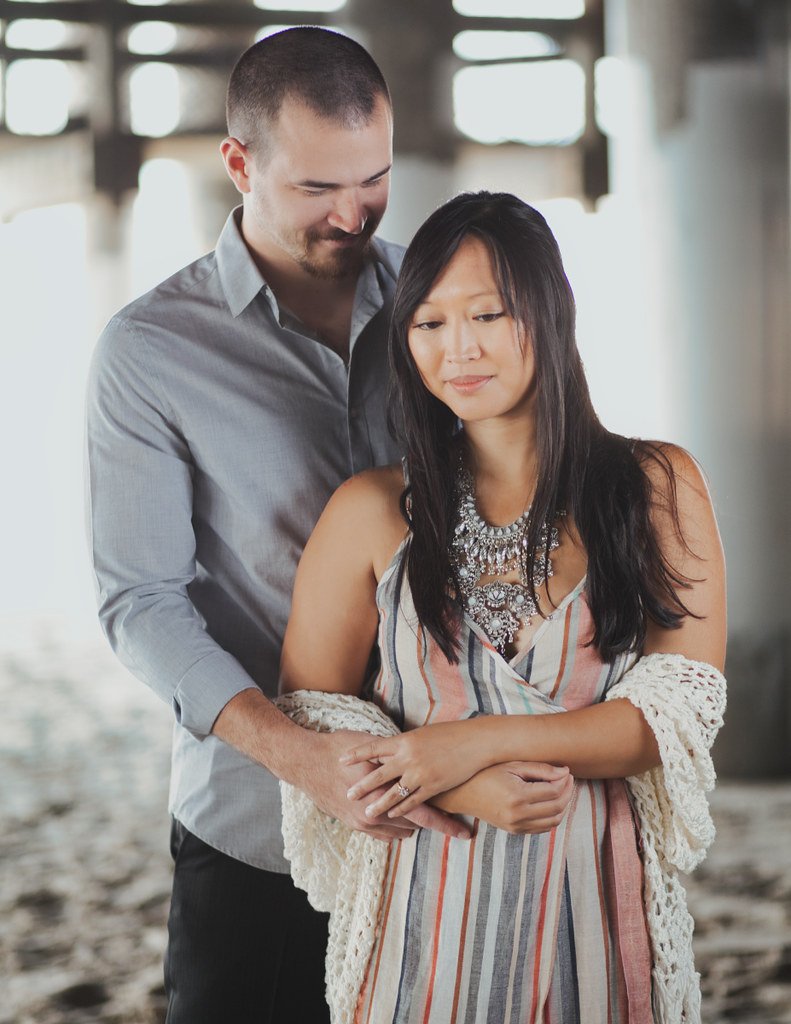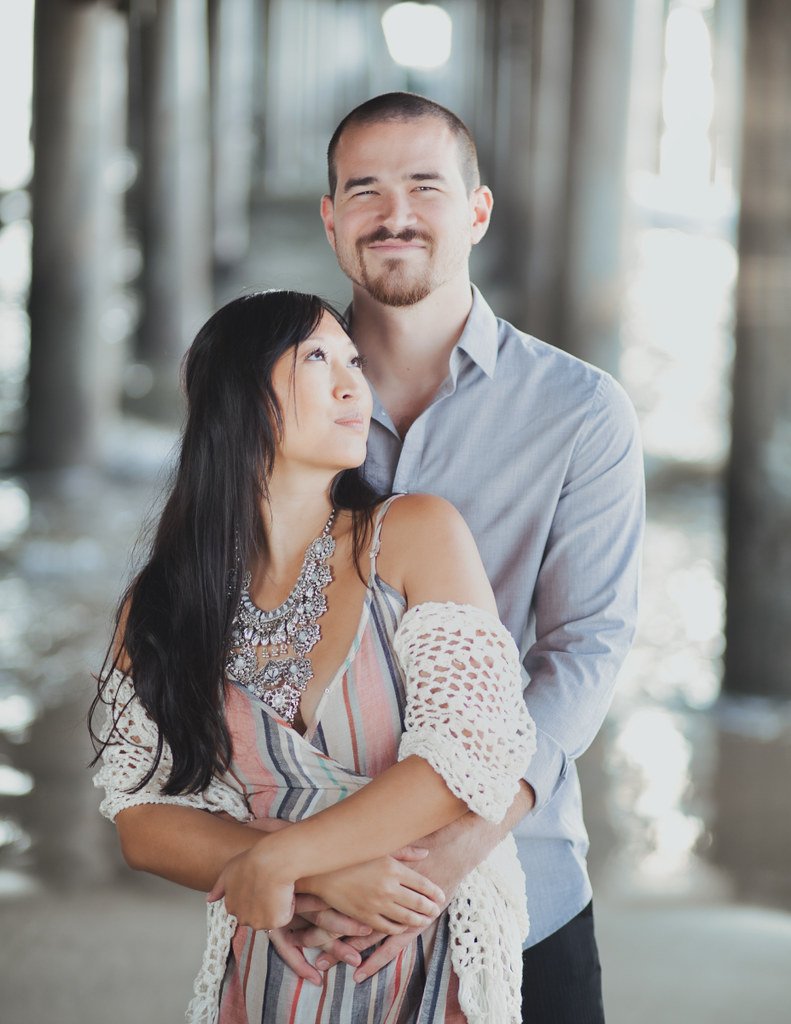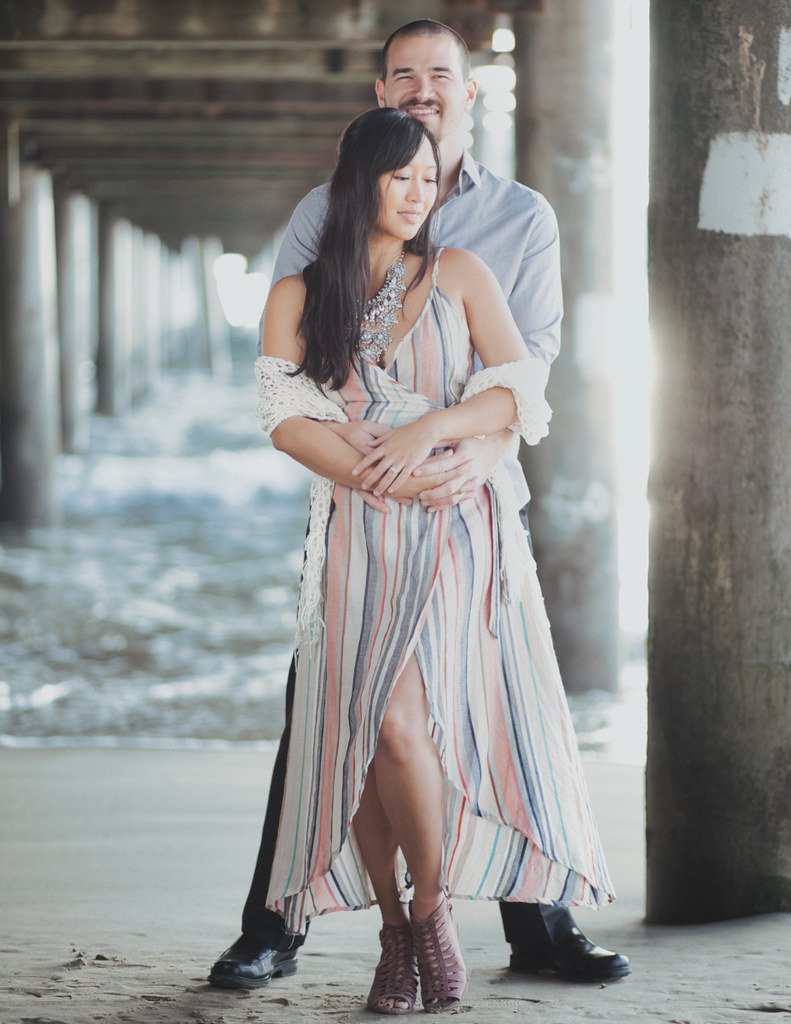Shooting tethered refers to the practice of connecting a camera to a computer or other display device in order to control, take, and view images as they are being captured. This is considered to be optimal for portrait photography for several reasons:
Real-time feedback: When shooting tethered, the photographer and his/her team can view the images on a larger screen in real-time, allowing adjustments to hair, makeup, clothing, props, lighting, pose, and composition to be made as the shoot progresses. This can help to ensure the images straight out or the camera are of the highest quality possible.
Clients can view the images: When shooting tethered, clients can also view the images as they are being captured. This can be particularly useful in portrait photography, as it allows the client to give feedback on poses and expressions, ensuring that the final images are exactly what they are looking for.
Better color accuracy: Tethered shooting allows for better color accuracy as the photographer can view the images on a calibrated monitor, ensuring that the colors are accurate and consistent. This is particularly important in portrait photography, where skin tones and color balance are crucial.
Easier to make adjustments: When shooting tethered, the photographer can control the camera settings such as aperture, shutter speed, and ISO directly from the computer. Photographers who use this method believe that it helps them to be more engaged with the client. They believe that the camera creates a barrier between them and their subjects and that the simple process of stepping away from the camera and controlling from the side allows for a deeper connection with the subject.
Increased productivity: Shooting tethered allows the photographer to work more efficiently and to make changes to the images without having to stop and review them on the camera’s small screen. This can save time and allow the photographer to capture more images during a shoot. In addition, each shot is “written” to the computer, so the need to copy all files from the camera to the computer after the shoot is finished is no longer required.
Increased safety of the images: By shooting tethered, the photographer can backup the images as they are being captured, reducing the risk of image loss due to camera failure or other unexpected events. My workflow allows for all new data to be constantly backed up to the cloud as that new data is written. Often, all photos from a shoot will be backed up to the cloud automatically before I leave the shoot location. This helps to ensure data integrity should an accident, theft, or loss occur as I’m in transit after the shoot is finished.
Shooting tethered is an essential aspect of the workflow for portrait photographers because of the reasons listed above. There may be plenty of occasions where shooting tethered is not feasible, but those should be minimal.
Next, we’ll discuss the resources do photographers actually NEED in order to shoot tethered.
In order to shoot tethered, you will need the following equipment and software:
Camera: All modern cameras can be used for tethered shooting. Check the camera's manual or manufacturer's website for the kind of cable you need. A company called CamRanger even makes devices that allow for wireless tethered shooting!
Computer: You will need a computer to connect to your camera and control it while shooting. The computer should have enough processing power and memory to handle the large image files that are generated by modern digital cameras. Macs and PCs are fairly standard for this task, although you can shoot tethered on a Linux laptop (as I often do) as well.
Tethering cable: You will need a USB or Firewire cable to connect the camera to the computer. The length of the cable will depend on the specific setup of your shooting location. Tether cables are not “one size fits all.” Ensure you search for a cable that will fit your specific camera. As an example, my main and backup cameras are a Canon 5D Mark IV and a Canon 5D Mark II. Even though they are both from the same company and are in the same “family” of cameras, they require different cables when shooting tethered..
Software: In order to control the camera and view the images on the computer, you will need the right software to act as an interface between camera and computer. Many camera manufacturers provide their own software, such as Canon's EOS Utility or Nikon's Camera Control Pro. There are also third-party options such as Lightroom or Capture One. I use a freeware software application called DarkTable when I shoot tethered with my Linux laptop.
Monitor: although it’s not a requirement, using an external (larger) monitor makes the process of shooting tethered much better for everyone involved. Shooting on location will be made more difficult with an additional monitor, so you’ll often only see a laptop on set - especially for outdoor shoots.
Backup device: It's also recommended to have a backup device, such as an external hard drive or SSD, to store the images as they are being captured. This ensures that the images are safe and secure in case of camera failure or other unexpected events.
WiFi / Hotspot: The benefits of connectivity - especially on location - are significant. Connectivity is NOT required, so the professional photographer will do everything he/she can to make backups of all images taken and then separate those backups from each other (separate people in separate vehicles) when they’re being transported back to the studio/office.
SD Card Reader: last but not least - and technically not a tethered shooting device, a small SD card reader that plugs directly into your iPhone or iPad can help you generate "quick looks" to clients, art directors, and others during a shoot. Wedding photographers (as an example) will sometimes do this during some downtime during the meal in order to choose a small number of select photos to upload to a slideshow that the bride and groom's guests can watch while they're eating!
Ultimately, shooting tethered is a huge step up in productivity, efficiency, and professionalism. Tethered shooting makes everyone’s role on set easier and allows for a better understanding and awareness of how the shoot is progressing from the first to the last frame that is shot.




